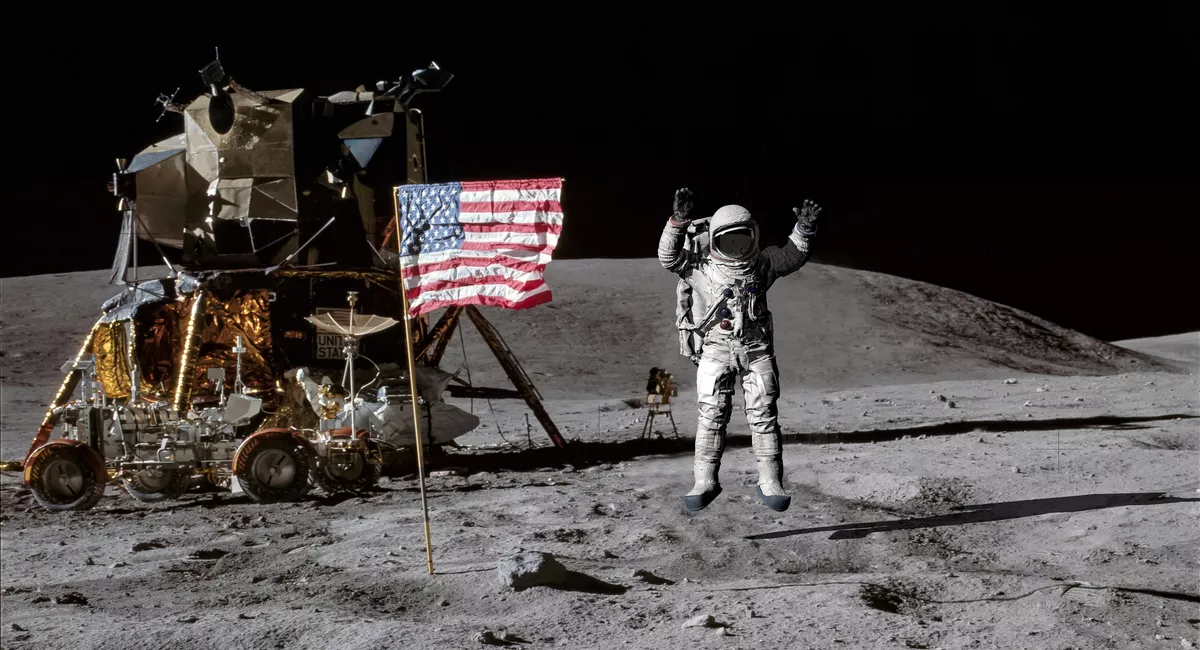The Apollo Program, launched by NASA in the 1960s, stands as an iconic symbol of human achievement and exploration, with a focus on manned space missions to explore the Moon. It represented a colossal leap in human space exploration, with its most iconic moment being the Apollo 11 mission that saw the first-ever human steps on the lunar surface. The program’s scientific achievements, technological advancements, and sheer human determination continue to inspire generations and laid the foundation for modern space exploration. Apollo remains a testament to what humanity can achieve when driven by curiosity and ambition.
Table of Contents
In this comprehensive article, we will delve deep into the fascinating history, remarkable accomplishments, and lasting legacy of NASA’s Apollo Program, which marked a pivotal moment in the history of space exploration. In our previous article on the James Webb Space Telescope (JWST), we explored the wonders of deep space observation, and now, we turn our focus to the historic Apollo Program: Pioneering NASA’s Journey to the Moon.
The origin of Apollo Program
The origins of the Apollo Program trace back to the early days of the Cold War, when the United States and the Soviet Union were engaged in a fierce competition to establish dominance in space. Before landing on the Moon, NASA had to tackle various missions, each contributing to the ultimate goal of the Apollo Program. These included Mercury and Gemini missions, which helped astronauts gain invaluable experience in space.

Apollo Missions: A Step-by-Step Journey
Apollo 1: Tragedy Strikes
The first attempt at launching Apollo 1 tragically ended in disaster. We’ll explore the tragic events of this mission and the lessons NASA learned from it.
Apollo 7: A Successful Start
Apollo 7 marked the first successful manned Apollo mission. It paved the way for further lunar exploration and was a significant turning point in the program.
Apollo 11: The Giant Leap
Arguably the most famous mission, Apollo 11 led to the historic moment when Neil Armstrong became the first human to set foot on the Moon. We’ll uncover the challenges and triumphs of this iconic mission.
The Scientific Achievements of Apollo Program
The Apollo Program, a remarkable chapter in human history, achieved several major scientific milestones. Perhaps the most iconic was the landing of Apollo 11 on the Moon in 1969, when Neil Armstrong took his historic first step. This event not only marked a significant milestone for space exploration but also provided invaluable data about the Moon’s geology and composition. The Apollo missions also conducted experiments and collected lunar samples, shedding light on the Moon’s origins and evolution.
In addition to lunar exploration, the program greatly advanced our understanding of space travel, technology, and the Earth itself, with missions like Apollo 13 demonstrating the resilience and resourcefulness of NASA’s scientists and astronauts in the face of adversity. These remarkable achievements paved the way for future space exploration endeavors and remain a testament to human curiosity and determination.

Faces of the Apollo Program: The Visionaries and Heroes
The Astronauts
The astronauts of the ApolloProgram were at the forefront of space exploration. We’ll highlight the key figures and their incredible journeys to the Moon.
The Engineers and Scientists
Behind every successful mission were countless engineers and scientists who worked tirelessly to make the impossible possible. We’ll shed light on their contributions to the program.
Technological Innovations
The Apollo Program introduced groundbreaking technology, from the mighty Saturn V rocket to the lunar module. We’ll explore the innovations that made the lunar landing a reality.
Computer Technology
Apollo also played a crucial role in advancing computer technology. We’ll discuss the primitive computers of the era and their significance in their missions.
Inspiring Future Generations: The Legacy of the Apollo Program
The Apollo Program’s legacy is still felt today in the form of international cooperation in space, the exploration of Mars, and more. Apollo continues to inspire generations of scientists, engineers, and dreamers. In this extensive exploration of the Apollo Program, we’ve traced its origins, the missions that defined it, the people who made it possible, the technological innovations it spurred, and its far-reaching impact on our world. The Apollo Program remains an enduring testament to human achievement and a symbol of our boundless curiosity and determination. As we look to the future of space exploration, we can’t help but be inspired by the incredible journey that began with a simple goal: reaching the Moon.






